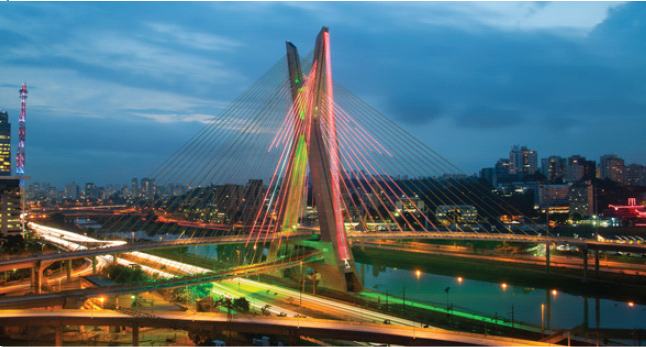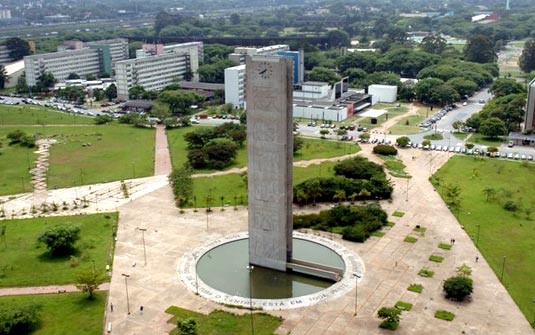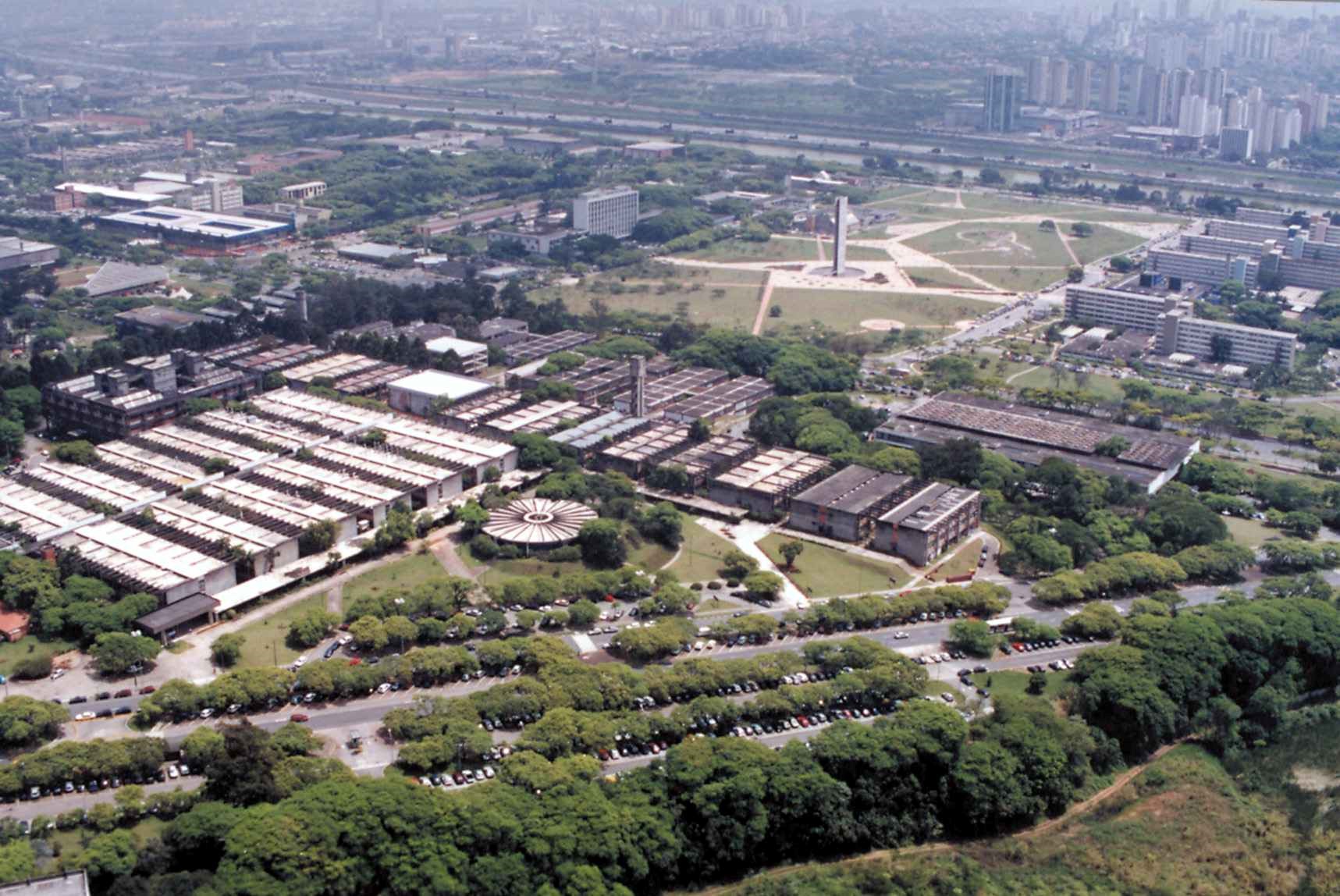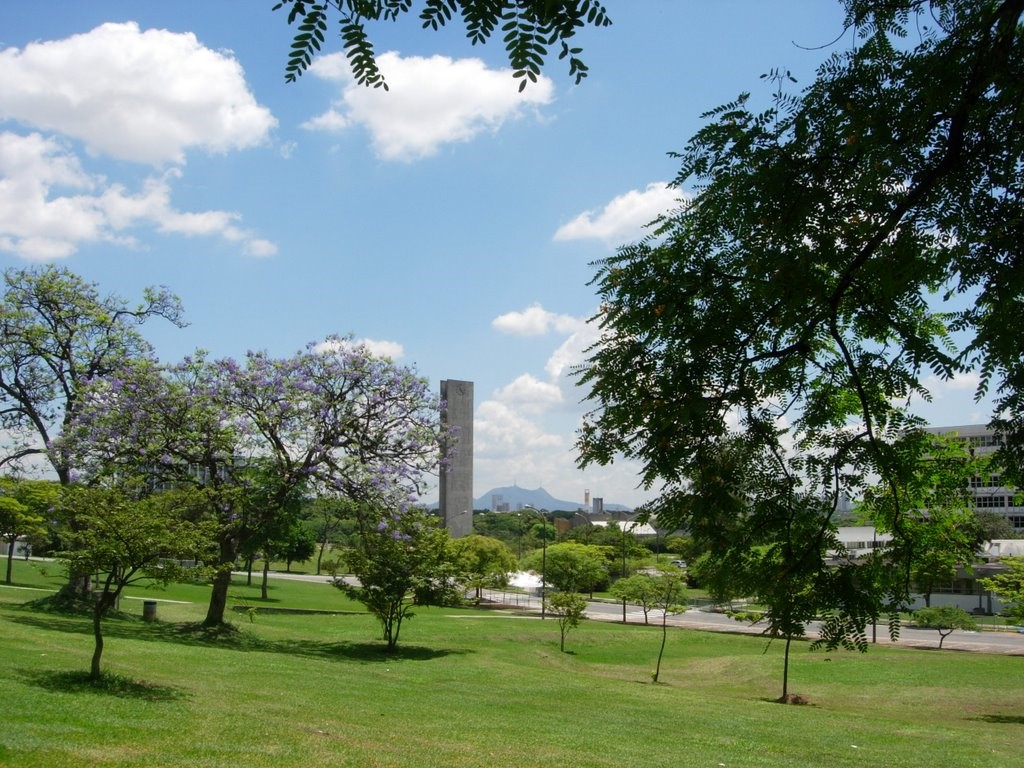São Paulo is one of the 27 federal units of Brazil. The state is part of the southeast region, also composed of Rio de Janeiro, Minas Gerais, and Espírito Santo. It borders the states of Minas Gerais to the north and northeast, Paraná state to the south, Rio de Janeiro east and Mato Grosso do Sul at the west, it also borders the Atlantic Ocean to the southeast. It has 645 municipalities and its total area is 248 219.481 km ², where 4. 971.0469 km ² is the urban perimeter. The capital of the state is the namesake city, Sao Paulo, South America's largest.
The state has more than 46,6 million inhabitants which represent about 22% of the Brazilian population. It is the most populous state in Brazil and the third most populous political unit of South America. The state, like Brazil, has several ethnic groups being formed mainly by Italians and Portugueses, but with the influence and presence of various other ethnic groups such as native Amerindian peoples, Africans, and other large migratory flows, as Arabs, Germans, Spaniards, Japanese and Chinese.

Estaiada Bridge
São Paulo has a very strong economy and is the state with the highest GDP, representing about 30% of the total wealth produced in Brazil; therefore earned the nickname "locomotive of Brazil." The state has a diversified economy: metalworking industries, textile, food, automobile, aviation, financial and services sectors, orange, coffee, ethanol, and sugarcane. Another interesting economic factor is the good investment infrastructure presented in the state, with the Stock Exchange, Commodities, and Futures Exchange of São Paulo, the second-largest stock exchange in the world by market value.
It's not just the economy that deserves attention. The state has considerably good social indicators, being the 3rd best Human Development Index (HDI) of 0.833. São Paulo's GDP is equivalent to the sum of the economies of Argentina, Uruguay, Paraguay, and Bolivia.
The University of São Paulo (USP) is a Brazilian public institution, established in 1934, maintained by the State of São Paulo. This means that no student pays fees to study at the university, which is fully maintained by state taxes. In the Brazilian system, free public education is the one that maintains the highest quality in teaching, research, and extension, the tripod that supports the Brazilian public university system. That is why USP grows each year in international rankings and is always in the first place not only in Brazil but throughout Latin America. The university has the best researchers in the country on its staff, which reflects on the quality of teaching at the undergraduate and postgraduate levels.
USP - University of São Paulo

The Clock Square
There are 249 undergraduate programs offered and the number of students enrolled is approximately 58,000. It also has 239 graduate programs, with around 28,000 students. Until early 2013, more than 100,000 doctoral theses and Master dissertations have been defended. In addition, the University also has a social responsibility obligation represented by the extension area. There are 993 different courses involving specialization, improvement, updating, and diffusion, with over 29,000 students.
USP has the objective of developing lively teaching, following the transformation of knowledge, and keeping in constant dialogue with society in a productive integration of education, research, and extension. There are 6,000 professors, 98% of them with doctorates and exclusive dedication, 16,800 administrative staff, and an annual budget of about $ 2.5 billion for 2013.
The USP campus in Ribeirão Preto is widely recognized for both its beautiful park-like setting and its academic excellence. Originally laid out in the 1950s as a health sciences campus (medical and nursing sciences, pharmaceutical sciences, dentistry), several academic specialties were gradually added, such as physics and mathematics, information technology, chemistry, biology, psychology, and education. More recent foundations are a School of Economics, Business Administration and Accounting, a Law School, a School of Physical Education, and an undergraduate program in Music. Thus, the Campus of Ribeirão Preto now is not only the second-largest USP campus in terms of academic specialties, but also in scientific production.

USP Campus São Paulo - Aerial View

USP Campus São Paulo
So as to best receive visiting scientists and students from abroad, the Campus has an International Office that works integrated with the International Offices of each Faculty and helps visitors in getting settled and to feel the hospitality of the Interior. Being an administrative, business, and cultural center in the interior of São Paulo, the city is thriving with an active cultural and student life.

